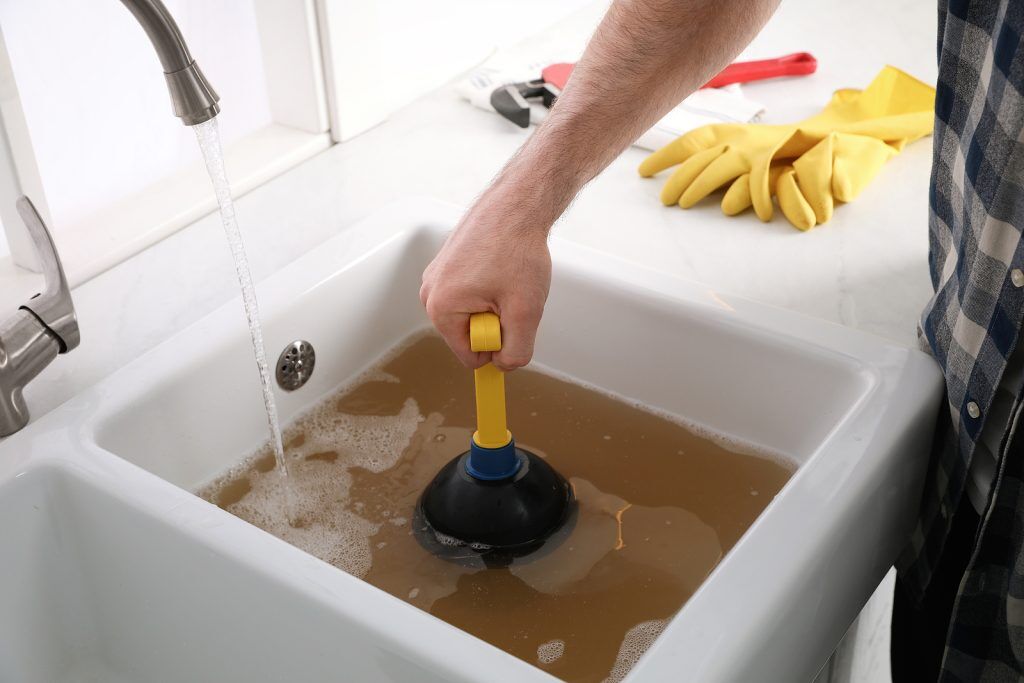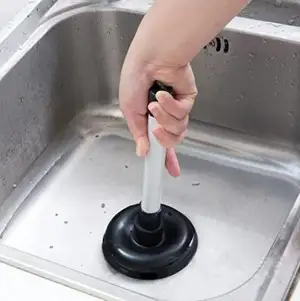What're your concepts on How To Use Your Toilet Plunger Correctly in 5 Easy Steps?

Intro
Proper upkeep of family drains is necessary for preventing clogs and making sure smooth water circulation. Among the trick tools in every homeowner's toolkit is the plunger, alongside various drain cleaners developed to deal with stubborn obstructions properly. This article checks out just how to make use of plungers and drainpipe cleansers efficiently to maintain your drains pipes flowing openly.
Section 1: Understanding Bettors
Sorts of Plungers
There are several sorts of plungers readily available, each designed for different kinds of drains and obstructs. The most typical kinds include mug plungers, flange plungers, and accordion bettors.
How Plungers Work
Bettors work with the concept of developing stress and suction to remove blockages. When correctly used over a drainpipe, they produce a vacuum cleaner that can take out particles or separate obstructions.
Picking the Right Bettor
Selecting the right plunger depends upon the kind of drainpipe and the nature of the clog. Mug bettors are excellent for sinks and bathtubs, while flange bettors are much better matched for toilets because of their style.
Usual Blunders with Bettors
Preventing these blunders guarantees reliable plunging: inappropriate seal around the drainpipe, inadequate pressure, and unclear bordering debris.
Area 2: Utilizing Plungers Successfully
Prep work
Before plunging, ensure the plunger covers the drainpipe completely and develops a limited seal. Clear any kind of visible particles around the drainpipe opening.
Technique
Start with mild plunging motions to build suction. Rise stress slowly, utilizing a consistent rhythm. Repeat as needed till the drainpipe removes.
Fixing Tips
If diving doesn't function, attempt adjusting the seal, using petroleum jelly for a much better seal, or utilizing a different kind of plunger.
Section 3: Recognizing Drain Cleaners
Kinds Of Drain Cleaners
Drain pipes cleansers can be chemical or enzymatic. Chemical cleansers use solid chemicals to dissolve obstructions, while enzymatic cleaners make use of all-natural enzymes to break down organic matter.
How Drain Cleaning Company Job
Chemical cleaners respond with blockages to dissolve them, while enzymatic cleaners break down organic products like hair and grease without hurting pipelines.
Safety Considerations
Constantly put on handwear covers and eye defense when using chemical drainpipe cleansers. Make sure ample air flow and follow manufacturer instructions very carefully.
Eco-Friendly Alternatives
Take into consideration utilizing vinegar and baking soda or enzyme-based cleansers for environment-friendly options that are safer for pipes and the setting.
Area 4: Making Use Of Drain Cleansers Successfully
Application Techniques
Put chemical cleaners directly into the drain opening. Enable them to benefit the recommended time prior to flushing with warm water. Enzymatic cleansers should sit overnight.
Precautions
Stay clear of mixing various types of cleansers, as this can generate hazardous fumes. Never ever utilize chemical cleaners combined with a bettor, as spilling can take place.
Taking Care Of Persistent Clogs
For persistent clogs, take into consideration making use of a pipes snake or calling an expert plumbing professional to prevent damages to pipes.
Final thought
In conclusion, understanding just how to use bettors and drain cleaners efficiently is necessary for keeping healthy and balanced plumbing systems. By selecting the right tools and strategies, homeowners can take on small obstructions and prevent major plumbing problems down the line.
How to Use a Plunger to Unclog a Drain
The humble plunger is a simple yet effective tool for breaking clogs in sinks, tubs and toilets. This handy tool is easy to use. You can make the most of its power if you understand how it works. Ready to dive in? Here’s what you need to know.
Safety First!
Never use a plunger with drain chemicals. Water will splash as you work, and the chemicals can spatter, burning skin and eyes. It’s a good idea to use rubber gloves and wear safety goggles when you work on a clog.
Choose the Right Tool for the Job
Plungers come in two different styles. Sinks, bathtubs and showers require a cup plunger. Like its name suggests, the rubber end is shaped like a cup. Use a flange plunger on toilets. These plungers have a rubber funnel extending from the cup. A plunger needs to be big enough to cover the drain.
Ready, Set, Plunge!
Coat the rim: Coat the plunger rim with petroleum jelly. This helps make a better seal.
Block outlets: Hold a wet rag over nearby outlets such as the overflow vent or the drain in a second sink.
Release air: Insert the plunger at an angle into the water. Water will displace air in the cup. A water-filled cup is more forceful than one filled with air.
Keep the plunger upright: Hold the plunger perpendicular to the drain. Use fast, forceful strokes, but make the first stroke gentle. The first stroke can create a splash if the cup still contains air. Thrust the plunger 15 to 20 times.
Snap off the plunger: The final stroke should be a strong upward motion that ends when the plunger snaps off the drain.
Repeat the process: you may need to repeat this sequence several times. When the water drains away, your work is done. High-five! https://plumbernw.com/blog/how-to-use-a-plunger-to-unclog-a-drain/

Application Techniques
Put chemical cleaners directly into the drain opening. Enable them to benefit the recommended time prior to flushing with warm water. Enzymatic cleansers should sit overnight.
Precautions
Stay clear of mixing various types of cleansers, as this can generate hazardous fumes. Never ever utilize chemical cleaners combined with a bettor, as spilling can take place.
Taking Care Of Persistent Clogs
For persistent clogs, take into consideration making use of a pipes snake or calling an expert plumbing professional to prevent damages to pipes.
Final thought
In conclusion, understanding just how to use bettors and drain cleaners efficiently is necessary for keeping healthy and balanced plumbing systems. By selecting the right tools and strategies, homeowners can take on small obstructions and prevent major plumbing problems down the line.
How to Use a Plunger to Unclog a Drain
The humble plunger is a simple yet effective tool for breaking clogs in sinks, tubs and toilets. This handy tool is easy to use. You can make the most of its power if you understand how it works. Ready to dive in? Here’s what you need to know.
Safety First!
Never use a plunger with drain chemicals. Water will splash as you work, and the chemicals can spatter, burning skin and eyes. It’s a good idea to use rubber gloves and wear safety goggles when you work on a clog.
Choose the Right Tool for the Job
Plungers come in two different styles. Sinks, bathtubs and showers require a cup plunger. Like its name suggests, the rubber end is shaped like a cup. Use a flange plunger on toilets. These plungers have a rubber funnel extending from the cup. A plunger needs to be big enough to cover the drain.
Ready, Set, Plunge!
Coat the rim: Coat the plunger rim with petroleum jelly. This helps make a better seal. Block outlets: Hold a wet rag over nearby outlets such as the overflow vent or the drain in a second sink. Release air: Insert the plunger at an angle into the water. Water will displace air in the cup. A water-filled cup is more forceful than one filled with air. Keep the plunger upright: Hold the plunger perpendicular to the drain. Use fast, forceful strokes, but make the first stroke gentle. The first stroke can create a splash if the cup still contains air. Thrust the plunger 15 to 20 times. Snap off the plunger: The final stroke should be a strong upward motion that ends when the plunger snaps off the drain. Repeat the process: you may need to repeat this sequence several times. When the water drains away, your work is done. High-five! https://plumbernw.com/blog/how-to-use-a-plunger-to-unclog-a-drain/

Do you like more info about Here's How to Correctly Use a Toilet Plunger? Put a remark down the page. We'd be delighted to see your views about this content. We hope that you come back again in the future. Are you aware of someone else who is serious about How to Unclog Your Sink with a Plunger? Why not share it. I recognize the value of your readership.
Request Free Estimate